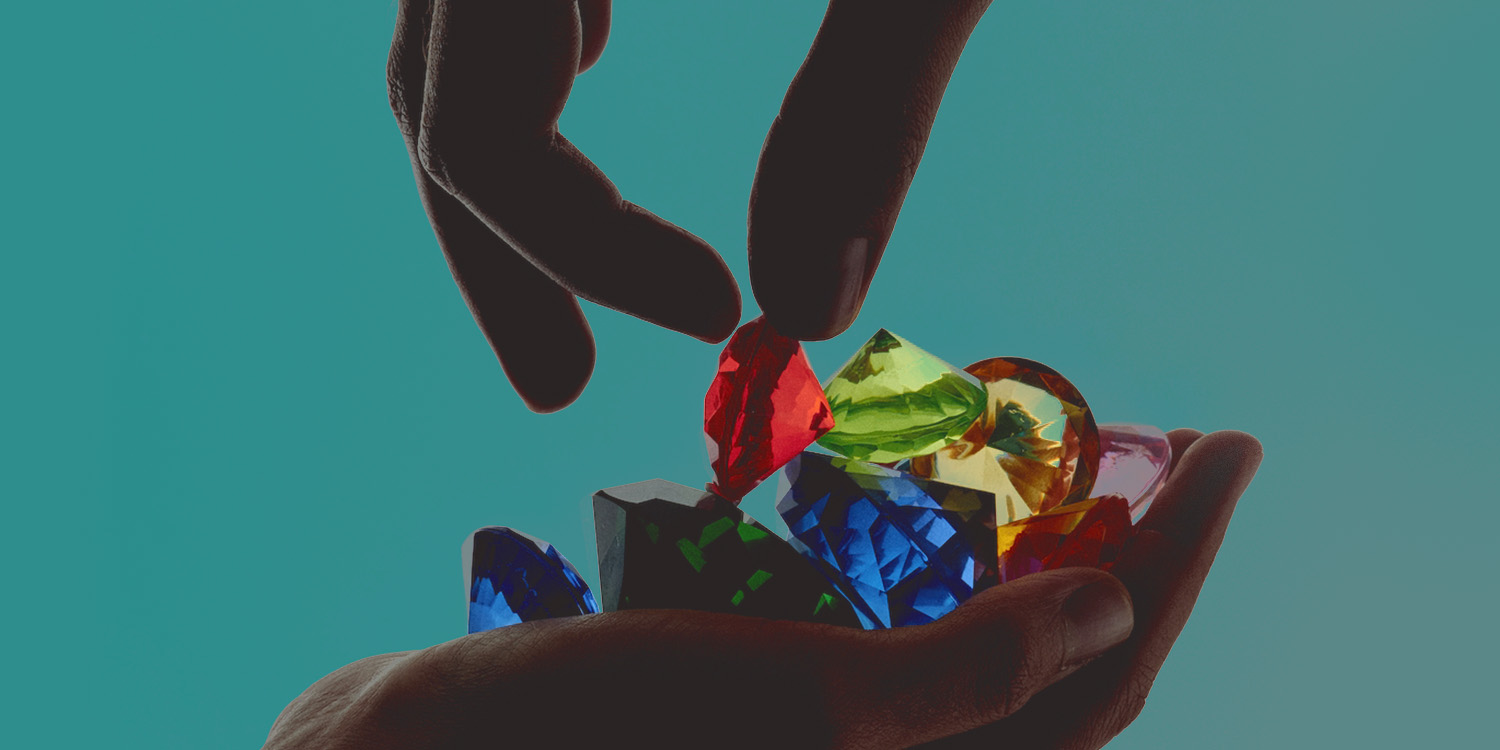Time has become the single most important variable in business and strategy.
Agile teams, speed to market, real-time marketing, expedited R&D cycles, Chief Transformation Officers, real-time analytics, and even operating innovations like predictive shipping point to one truth: to understand something is to understand how it is changing.
Time is also at the core of brand, where we know there is no brand strategy without a prediction and to build a brand you have to know how time will change the playing field.
Yet one of our most crucial building blocks for brand strategy – the competitive analysis – conspicuously leaves time out of the equation.
There are many models for competitive analysis, from SWOTs and perception 2x2s to growth-share matrices. All of them reveal different insights, but none of them truly explain how the competitive landscape is changing over time, and what impact that will have on the market and user.
They’re static snapshots (with the occasional inclusion of a moving dynamic like “threats” on the horizon) that don’t prepare brands for how quickly things will inevitably change.
Nothing about business or brands can be understood in the absence of time, and as the poet Victor Hugo said, “Nothing is more powerful than an idea whose time has come.”
Your market is going to change because right now your competitors are working in ways to make that happen. Over time, those changes will evolve your users, and when your users reach that new point of evolution, they will be ready for a new idea.
And if you’re smart, your brand can be the new idea whose time has come.
What you need is a new perspective for understanding the competitive landscape and a new model for unpacking that perspective into actionable insights.
We developed the Temporal Competitive Analysis to do exactly that.
It’s 4 steps, each building on the last, to see how the market will evolve over time and how to win over that horizon:
- Follow the influence. Remember that your competitors are not the ones building the same products as you. They are the ones envisioning the same future as you.
- Pull out the conditioning narratives. Look for the future-forward stories your competitors are propagating. Those stories are how your competitors are conditioning your market to think, feel, behave and buy in the next 3-5 years.
- Roll the dice forward. If those conditioning narratives play out over the next few years, what is the second-order insight that arises? When people change the way you know they will change, how does that alter the rules of the game?
- Build for the new game. A brand’s job is to bring the future forward. Don’t build for today’s game, build for tomorrow’s.
Below, I go through each of these four steps. You will be required to both drop your comfortable biases and make uncomfortable predictions – things you should be doing as a strategist anyway – and every time you do, you will gain a sharper focus on your market.
Step 1: Follow the influence.
The first step is to roundup all of the market players that should be a part of your perspective. Most brands have direct competitors that are either making the same product or solving the same problem. They’re easy to spot and easy to compare to.
More important, however, is to look for other players on the sidelines that may not be direct competitors but are capable of having an outsized influence on the same future that you are trying to create with your brand. Players that are envisioning the same future as you, regardless of their product, are the ones who stand to sway your market the most, and the ones you will likely be the least prepared for.
I’ve worked with many education startups across different technologies, user ages, content topics and target buyers. I can tell you that education is a very hard industry to disrupt. Tech founders selling to public schools face the same difficulties as career educators selling to parents – habits in how we learn are extremely hard to break. Change is slow, and even if change is possible, it is very rarely scaleable.
But there has been one player that has changed US education faster than any other that has come before it in the past decade. The change was swift, felt in all corners of the education market, and came from a brand that was initially completely outside of the education ecosystem when it first took root in America: TikTok.
One in four people use TikTok for education, and 69% of those people use it for their homework. That’s had an outsized effect on how people expect to learn today.
In just the past few years, TikTok has wired learners to expect quick-hit learning rather than deeper discovery and analysis and to understand with a lot less nuance, but at the same time it’s also conditioned them to expect education to feel highly emotive and exciting, and to expect stronger storytelling.
That’s tremendous sway for a brand that didn’t look like an education company, but TikTok’s mission is to “inspire creativity and bring joy”, and they have a clear vision for how people of all ages are to consume and understand content.
If you look at it through that lens, it’s suddenly clear that TikTok would very much be an influencing force in how we learn and what we learn. Their mission and vision don’t seem any different than many edtech startups.
Look for the brands that are influencing your category, not just in the tech or products they are bringing to market, but in how they are changing the expectations and behaviors of your users, now and into the future.
Oftentimes the biggest influencers are on the sidelines.
The easiest way to open your mind is to look at the category, not the niche. If you’re a medical device company, look at all players in health and wellness, not just devices. If you’re a makeup brand, don’t just look at makeup, look at every brand that sits within beauty including grooming, plastic surgery and even feminism. If you’re a fintech brand, look at every brand that touches wealth, from banks and trading platforms all the way to luxury goods and lifestyle services.
Another way to expand your lens is to look at it through Richard Rumelt’s notion of “attractor states”, where naturally desirable future outcomes are driving the actions and strategies of different brands. If your brand is in the automotive industry, the future state of EVs is also driving a lot of innovation and capital into sustainable energy solutions, advanced battery technologies, and smart transportation systems.
Go wide. You need a wide consideration set in order to start seeing the patterns that will pop up in step 2.
Step 2: Pull out the conditioning narratives.
Take a close look at all of the brands and innovations bubbling up in your category and decipher the future-forward stories they are propagating.
What’s crucial to understand about those stories is that they’re how your competitors are conditioning your market to think, feel, behave and buy in the next 3-5 years.
Stories don’t just come from a brand’s website and content. They come from the nature of the innovations a brand is pursuing. They come from implied narratives in the product experience, user experience, packaging, organizational structure, collabs and partnerships, public relations and media pieces, and so on.
I’ve written before that brands tell stories between the lines. In this step, looking between the lines is imperative.
The parenting and motherhood industry is wide and deep, and rife with emotionally charged narratives. Influencer brands in this space are usually tackling big topics around fear, anxiety and shame, but also joy, sanctity and identity.
A brand like Boram Care, which I’ve written about recently, simply describes itself as a postnatal retreat, but its high-touch services focusing on gently training new mothers in a luxe environment, press hits, carefully selected language that mentions “judgment-free” care and “calm, comfortable and secure” spaces, and massage and food menus tell a very different story.
For the uninitiated, Boram may come across as a luxury hotel for moms, but new mothers see something very different.
The nature and experience of motherhood is being challenged on all fronts right now. A massive amount of discourse both in mainstream publications and in hidden blogs, online communities, and group chats is raising alarm over what has been stolen from American mothers.
Without a village, without social infrastructure, without a financial safety net and without traditions, new motherhood has become a very disempowering and sometimes even shame-inducing stage of life.
The Boram Care brand, on the other hand, is conditioning new mothers to expect dignity instead.
As I wrote in my article, “Boram isn’t about luxuries. It’s about honoring the integrity of a woman who has just given birth […] In this experience, mothers… are not forced into failure. They are lifted into possibility.”
Consider all of the conditioning narratives in your landscape just as deeply, for each brand.
As you go through, you will begin to see patterns emerge. Brands will usually cluster around two or three overarching conditioning narratives in any given market. Not all brands will have conditioning narratives, but the influencers will, and they act as pillars in the space.
If we took a very high level look at this space, these are the three major conditioning narratives we might see:
Dignity
Brands and innovations are re-centering the mother, conditioning the market to expect and believe in a strong sense of self-worth, value, self-respect and ethical treatment in the user experience.
- High-touch pre and post-partum care centers like Boram Care and Origin
- Experience-led fertility clinics like Maven, Kindbody and Cofertility
- Clothing and device brands Nyssa Care (underwear) and Elvie
- Restorative and gynecological technologies like the JADA System and Cosm’s Gynethotics
Control
Brands and innovations across the space are conditioning users to exert more control than ever before, and to equate control with good parenting.
- Nontoxic food, medicine and clothing brands like Yumi, Little Spoon, Cerebelly, Genexa, Hiya, Bobbie, and Primary
- Science-backed activity brands like Slumberkins, Lovevery and KiwiCo
- Smart sleep systems like Snoo, Cradlewise, and Huckleberry
- Biotech companies like Gameto therapeutics and Modern Fertility home testing kits
- On-demand driving, healthcare and childcare brands like HopSkipDrive, Zum, Poppy Seed Health and Otter
Ritual
A new league of brands is redefining motherhood through ritual, creating a strong feeling and expectation of connection, sanctity and nurturance that is currently missing pre-and post-birth.
- Midwife and doula-led care like Oula, Quilted Health, and Millie
- Parent social networks and platforms like Peanut and What To Expect
- Postpartum food delivery like Mama Meals, Nourish and Motherbees
- Cultural connection brands like Days United
These three conditioning stories, taken together, start to paint a picture of the landscape that is being molded by brands and consumers. We can see that people in this early parenting space are going to become more expectant of dignity in their experiences, in search of more and more control, and craving a missing sense of ritual and ceremony.
These will become the unspoken qualifiers for their purchases and the experiences they are willing to pay a premium for.
But reaching these narratives isn’t enough to build a brand.
Now we have to ask ourselves, what are these conditions leading us to?
Step 3: Roll the dice forward.
If we know these conditioning narratives of dignity, control and ritual are going to play out over the next couple of years, what is the second order insight that arises?
What is the “so what?” that naturally follows these conditions? When people change the way you know they will change, how does that alter the rules of the game?
When doing this step for any brand in any category, it’s important to keep in mind that second order insights are going to lead you to a new truth about the user. This step 3 is where the evolved user comes in, and step 4 is where we can then create the idea whose time has come.
The only way to roll the dice forward is to completely immerse yourself in the narratives. Feel, think, see, imagine what this new market and new user are like. Push yourself to go further than feels comfortable because things change faster than we realize.
A few years ago, mental health therapy wouldn’t have been the flex that it is today, astrology was not a mainstream language, and AI seemed promising, not scary. Roll the dice harder and farther than you think you might need to.
Rolling the dice forward in the early motherhood space might lead us to an interesting second order insight: the arrival of customizable motherhood.
Motherhood has always been a monolith, but imagine a world where the motherhood journey becomes fragmented and multidimensional, highly unique between mothers.
Imagine a new mother who doesn’t just expect, but demands, that everything from her birthing style to her medical care, postpartum rituals, recovery practices, food choices, self-care philosophy, family formation and every detail of every experience all be fully customizable to her tastes. No two women’s journeys would look the same.
I can assure you, having worked in this space and studied these mothers for many years, that very few mothers think like this right now.
No one thinks the full spectrum of motherhood is customizable, at least not for long. Nor do they know how it would feel to have complete agency, being at the center of the motherhood experience, to craft a journey that allows themselves to be reborn as someone’s parent.
Today the child is centered, and outside of a birth plan that is often ignored and the rare woman who can work with a doula, motherhood feels like it “happens” to women.
But customizable motherhood means that women will expect to be able to piece together a patchwork of services, philosophies and products that create their overall journey. They will demand not only to do what they want, but how they want it.
They will feel like motherhood is no longer a string of abstract challenges and difficulties, but rather a clear and transparent set of choices that make them more confident with each step forward.
And it’s very possible that all of this results in a shift in what the moral imperative in motherhood is, that instead of the blanket goal of raising a child no matter the sacrifice, motherhood becomes about choosing what kind of motherhood experience you want to have.
When a woman expects customizable motherhood, how will this whole space change? Who will this new woman be? What kind of a brand will she be demanding?
In your own category, begin to map out what the new rules of the game will become. Predict what the new norms will be, what our lived experiences will feel like, how our behaviors will evolve, and who we will evolve into.
Step 4: Build for the new game.
You know how your competitors will work to condition the market.
You know how that conditioning will change your users’ beliefs and behaviors.
You know how those things together will create a different landscape, with new rules, norms and consumer expectations.
Now you can build for this new game.
I won’t speculate what a brand for the new motherhood game would look like (we would need to sign a contract first) but any number of successful brands have done exactly this.
With the force of a primed market, and the timing of a smart strategy, they were able to deliver what an audience needed, right before they realized they needed it.
Patagonia didn’t win on their values alone. For decades, they saw environmentalism, global culture and travel change in the market. They saw how millennials had grown up to crave brands and experiences that made them feel engaged with the world instead of just consuming it. They saw how travel that was once about leisure was becoming more and more about meaning. They realized that environmentalism was becoming a story about how people from different parts of the Earth are connected to one another. They knew this cohort would soon be primed for a brand that made eco-conscious living a proper lifestyle, and that’s precisely what they built for.
Blockbuster, Pay-Per-View and Napster conditioned us to interface with media differently, and that created a market primed for Netflix’s model. Netflix not only ushered in the shift to digital streaming but helped condition a market to binge-watch TV shows and expect on-demand entertainment, which then primed us for platforms like TikTok.
Time was the biggest factor in all of these examples, and is the biggest factor for your brand as well. You can’t afford to look at your competitors in the absence of time.
What matters most is not where your competitors are today, but where they will be tomorrow, especially as the rate of change in markets only accelerates.
Temporal Competitive Analysis is especially important for companies in categories where there is a lot of innovation and consumer conditioning happening at the same time, like consumer health and medicine, personal technology, and food and agriculture. If you’re in these categories, you likely already feel there is a major blindspot in your approach to competitive strategy, and I hope this model helps.
Culture, environments, major events will change your user, but a lot of brands forget that oftentimes the most significant thing to change your consumer will be your competitors.
When you understand how competitors are conditioning your user to think and behave in the future, you don’t have to wait for the future to come. You can start building for that future right now.




